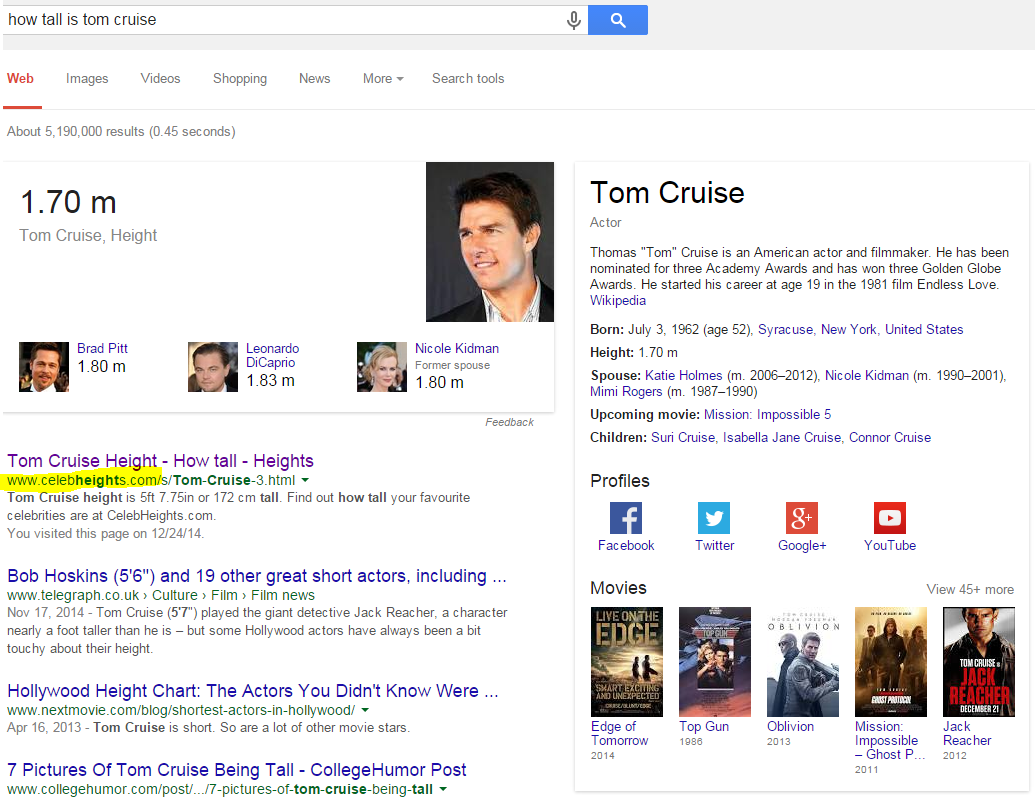A metric I frequently look at is search query data in Google Webmaster Tools (GWT)*. While our regular reporting tools tell us the visits and page views for websites, only GWT provides impression data--and they can be impressive.
* GWT is a free service provided by Google to Webmasters. It's easy to setup and there's a wealth of information and other features to be had.
What is an impression?
What's important all content publishers to understand is that appearing in search results, let alone the top 10 on the first page, isn't everything: the user still has to click through to your content. So impressions is simply the the number of times pages from your site appeared in search results, i.e. appeared on a search results page presented to a user. The number of impressions are substantially higher than the number clicks: a 10% click through rate (CTR) can be considered to be very good but still means that only 10 users click through on every 100 impressions. .
About those CTRs...
Recognizing that websites and web content within have a click through rate is very important first step in trying to influence it. Furthermore, CTRs vary by queries and pages across a website (there are ~21,000 queries/month on scn.sap.com alone). Why do this? Because increasing your click through rate is a quick win in getting more traffic to your site and content.
How does it all work? Let me put is this way: users ask a query and the search engine presents at least 10 (personalized) results to choose from. What influences which result the user clicks is a combination of what appears in the results:
- Rank (position)
- Title text
- URL
- Description (the default or what Google chooses to display)

This underlines the importance of having good titles, clean and keyword rich URLs, and concise descriptions that describe the benefit of and what can be found on the page or website. Another way to think about it is how are you going to sell your content once it appears in search results--and competition can be tough against other organic results, paid results and the Google's Knowledge Graph.
ℹ SCN members have more control over their content than they think: SEO Cheat Sheet for SCN
And Then Things Get Complicated with Intent and the Knowledge Graph
For better or worst, Google mostly makes money from search result pages, and the more time spent on search result pages means more revenue for Google. The Knowledge Graph is a feature that Google uses to both enhance search results while keeping users there longer. In it's simplest form, the knowledge graph provides the answer to your query right within the search results and without the need for the user to click through to the source of the information.
This killed websites like www.celebheights.com and others that provide frequently searched data, such as the weather. The knowledge graph data here appears at the top of the search results and also in the bio on the right:

We're seeing more and more answers provided this way, especially for queries containing an expression of intent such as "What is XYZ" or "How to...". I recently combed through SCN search queries and noticed that quite a few were generating knowledge graph answers. Here's an example for "What is SAP Fiori":

Other examples to try include:
- what is sap netweaver
- what is sap hana
- what is edi in sap
- what is asap methodology
- what is bapi in sap
What's different in the Fiori example Vs. Tom Cruise's eight is that the source URL of the information is provided. This does promote the page somewhat, even if a user no longer has to click through to get the answer.
Is this a threat? Yes and no. It very well may have an impact on CTRs but it's still important to work towards providing the answer of even these basic queries as part of your content marketing strategy.
Always be Selling
I hope this broadens your mind a bit on the topic of SEO, mainly the additional dimension of impressions and click through rates from search result pages.
Always be thinking how your audience will find what you want to share with them and about making a good impression in the process because first impressions count, after all.
